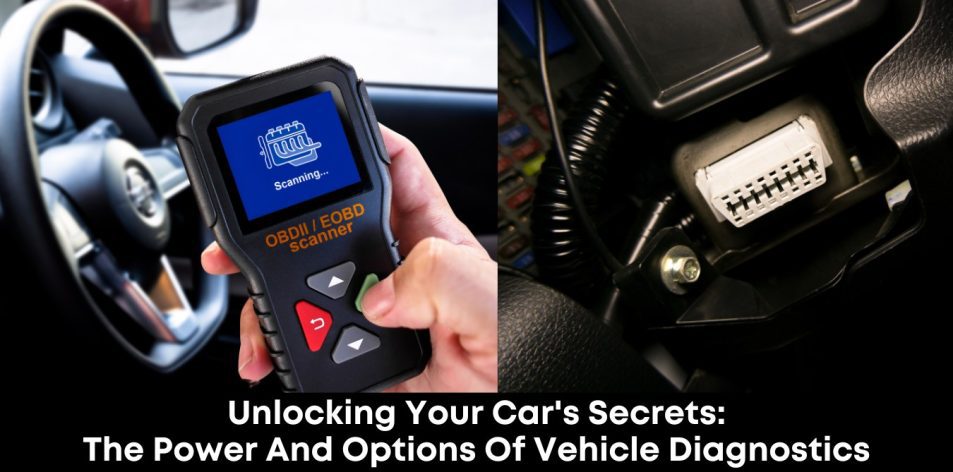Proactive Maintenance: The Best Defence Against Costly Repairs
Modern vehicles are equipped with sophisticated On-Board Diagnostics (OBD-II) computer systems that constantly monitor the health of various components. Understanding how to access and interpret this data through a diagnostic check is an essential part of responsible vehicle ownership. A routine diagnostic check is a preventative measure that helps detect minor faults before they escalate into major, expensive breakdowns, ultimately saving you time, money, and stress. This article highlights the benefits of vehicle diagnostics and explores the different options you have for accessing this vital information.
The Core Benefits of a Diagnostic Check
A diagnostic test provides a clear, digital window into the inner workings of your car, offering several key advantages:
- Early Problem Detection: It catches issues that don’t yet have noticeable symptoms. For example, a minor sensor fault can be flagged before it leads to severe engine or transmission problems.
- Cost-Effective Maintenance: By pinpointing the exact source of a problem (e.g., a specific ignition coil malfunction), it eliminates guesswork for your mechanic, leading to targeted repairs, reduced labour time, and significant cost savings.
- Enhanced Performance and Efficiency: Diagnosing issues like a faulty oxygen sensor or a clogged fuel injector ensures your engine runs optimally, which can improve fuel efficiency and restore your vehicle’s peak performance.
- Increased Safety: Checks on critical safety systems like the Anti-lock Braking System (ABS) and airbag system (SRS) confirm that these features are fully operational, keeping you and your family safer on the road.
- Supports Vehicle Longevity: Regular diagnostics prevent premature wear and tear on major components, ultimately extending the lifespan and reliability of your vehicle.
Different Options for Running a Diagnostic Check
All vehicles manufactured since the mid-1990s are equipped with a universal OBD-II port, usually located under the dashboard near the steering column. This port is where all diagnostic tools connect.
1. Handheld OBD-II Scanners (Dedicated Machines)
These are standalone electronic devices, ranging from basic code readers to advanced professional tools used by mechanics.
- Features: Plug directly into the OBD-II port via a cable. They feature a screen to display Diagnostic Trouble Codes (DTCs)—the five-digit alphanumeric codes that correspond to specific faults.
- Pros: Very reliable, durable, and the more advanced models can access complex, manufacturer-specific data. Basic models are affordable for quick checks.
- Best For: Professional workshops and serious DIY enthusiasts who need detailed, immediate information and a rugged device.
2. Bluetooth/Wi-Fi Adapters with Mobile Apps
These small adapters (often based on the ELM327 chip) plug into the OBD-II port and transmit data wirelessly to a smartphone or tablet running a dedicated diagnostics app (e.g., Torque, Car Scanner, Carly).
- Features: The adapter reads the data, and the mobile app displays it in a user-friendly format, often with clear code descriptions, real-time gauges, performance graphs, and trip data.
- Pros: Highly affordable and convenient, as they use the computing power and display of your existing smartphone. They offer excellent real-time data monitoring for driver enthusiasts.
- Best For: Everyday drivers and general enthusiasts who want to easily read and reset basic engine fault codes (like the Check Engine Light) and monitor vehicle performance parameters.
What Can a Diagnostic Check Reveal?
A comprehensive diagnostic scan goes far beyond just the engine. It checks the health of various computer-controlled systems, including the following:
- Powertrain (P-Codes): Engine management, fuel injection (injectors, pump), ignition coils, airflow sensors, emissions system, and transmission performance.
- Chassis (C-Codes): Anti-lock Braking System (ABS), traction control, and steering angle sensors.
- Body (B-Codes): Airbag (SRS) system, climate control (HVAC), interior electrics, and comfort features.
- Network (U-Codes): Faults in communication between the vehicle’s various onboard computer modules.
By investing in a diagnostic tool, even a simple one, and incorporating regular checks into your routine, you are empowering yourself with information. This proactive approach allows you to address potential issues efficiently and accurately, ensuring your vehicle remains a dependable and safe part of your life.

